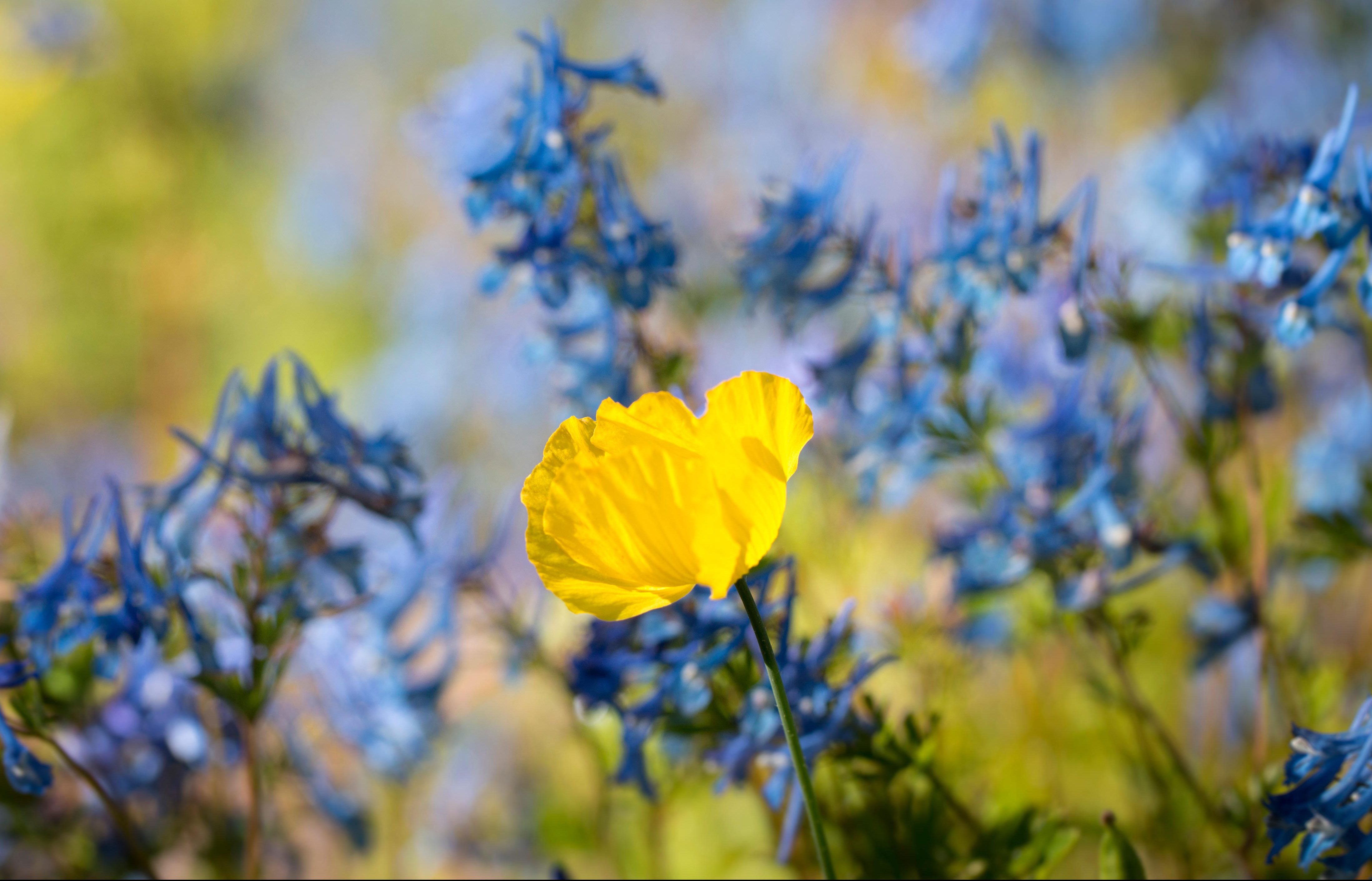Alan Titchmarsh: The plants that make me smile the most
Alan Titchmarsh admits that the plants that give him most pleasure aren't always the ones he's intended to grow.


Most gardening folk are well versed in the definition of a weed: a plant ‘growing where it is not wanted’ or ‘growing in the wrong place’. As such, the term becomes subjective and, when a seedling of Rosa glauca appeared in my bed of agapanthus it was, quite clearly, a weed. And yet I feel guilty at calling such a graceful briar ‘a weed’, in the same way that I find it hard to be too dismissive of those plants in my garden that are only too obliging in the way they spread themselves around.
Although I enjoy a challenge from time to time — nursing a tricky plant I admire through the early weeks and months (perhaps even years) of establishment until it decides to thrive — I have learned to respect even more those garden plants that can get along without me fussing around them like some horticultural mother hen. True enough, when I moved house 20 years ago, I did leave behind the variegated ground elder that was thought, in the early days of its popularity, to be less invasive than the plain green kind and which, in the event, was not too far behind it in the rampancy stakes. But the plants that make me smile the most (it is my chosen alternative to pulling out my hair) are those that seed themselves around with gay abandon.
Now, let me come clean and admit that this generosity of spirit does not apply to all of them. I struggle to feel more than mild affection (and that’s pushing it) for golden feverfew (Tanacetum parthenium ‘Aureum’). Oh, it’s delightful when it first makes its appearance as an acid-yellow rash of finely cut foliage, peppering the ground around the day lilies and the penstemons in my borders, but it quickly forgets its manners and becomes more thug-like when its white, yellow-centred daisies appear later in the year.
"In my Isle of Wight garden, the plants seed themselves between paving slabs and among gravel and those that receive the rain when they need it simply romp away."
Yet, as I write this, I wonder if I am being too harsh. But no; the foliage has an acrid tang that is not so endearing as the musky aroma of Geranium macrorrhizum, which I love dearly. This plant, too, will occasionally self-seed, but in not nearly so profligate a manner as the feverfew and its wondrous ground-covering rug, courtesy of those robust rhizomes, is extremely useful in the ground below shrubs where other plants refuse to thrive.
I remember my first encounter with that most generous of self-seeders Erigeron karvinskianus, which had insinuated itself into every crack and crevice of the paving at Great Dixter, East Sussex, on a visit to Christopher Lloyd back in the 1980s. This is a plant whose apparent delicacy of form belies its robust constitution. It wreathes itself in tiny white daisy flowers from one end of the summer to the other, but it is not for tidy gardeners. Sow it where it can luxuriate in its own untidiness — turning a once pinneat terrace into something more akin to a Greek ruin.
A friend confessed recently that they had tried to get it going and failed. Further questioning revealed that they had scattered the seeds, but had omitted to water them in. As with all seeds, once a modicum of moisture has been absorbed by the embryo, it is important that in the days that follow they are not allowed to dry out. I explained that the seeds had probably absorbed just enough moisture from the atmosphere to begin the germination process, but the absence of further supplies had resulted in them becoming desiccated. Tough as these plants are, the most critical time in their life cycle, as always, is after that initial absorption of moisture. In my Isle of Wight garden, the plants seed themselves between paving slabs and among gravel and those that receive the rain when they need it simply romp away.
Aquilegias, columbines or granny’s bonnets do the same and I am happy for them to remain, unless they produce small, dreary flowers, which can happen over the years when hybridisation has led to a diminution in flower quality. That said, they have such an elegant habit that I rarely ditch them before the flowers fade and the seed pods form.
Exquisite houses, the beauty of Nature, and how to get the most from your life, straight to your inbox.
Add to this the rash of healthy honesty seedlings (Lunaria annua) that is in evidence on the site of the old plant I pulled up during the winter and you will see that I have my hands full this spring keeping on top of those plants that decide where they want to grow without so much as a by your leave. But then, I have always found enthusiasm infectious.
Alan Titchmarsh’s new book, The Gardener’s Almanac, is out now

Alan Titchmarsh: The weeds I welcome with open arms
Our columnist Alan Titchmarsh used to spend hours ridding his garden of anything he hadn't planted himself. These days he

Credit: Jacky Parker / Getty
Alan Titchmarsh: 'Only God’s earth — in the garden and the countryside — is capable of coming up with the goods with reliability equal to that of St Nicholas'
Alan Titchmarsh's Christmas column looks at all the plants of the festive season.

Rage against the buttercups: How to wage war on the weeds in your garden
Charles Quest-Ritson loves plants — but in his garden, he only wants the ones he chooses.
Alan Titchmarsh is a gardener, writer, novelist and broadcaster.
